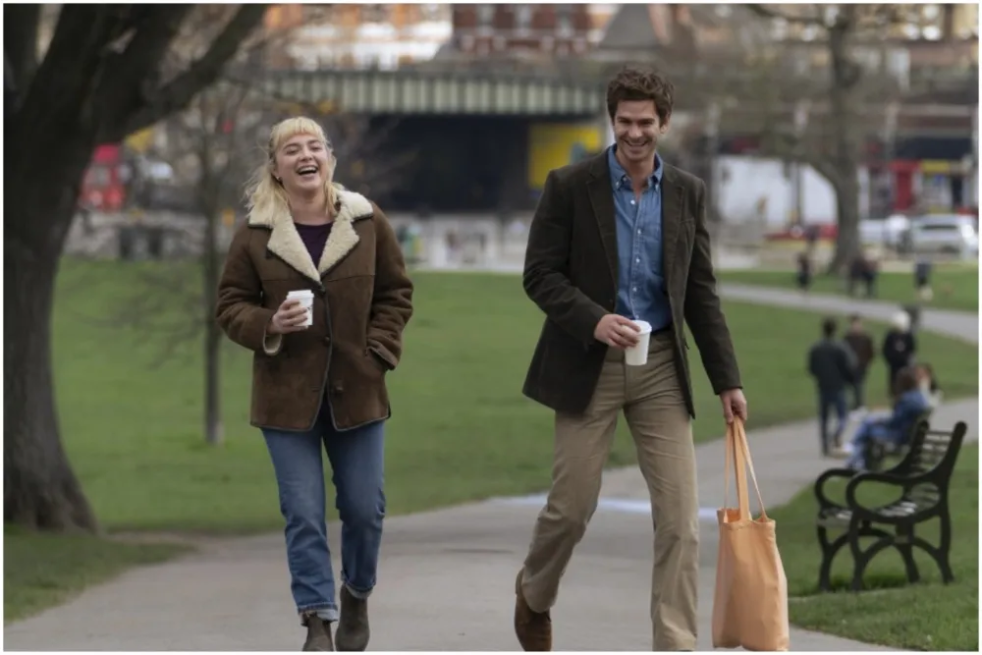From the indie powerhouse production company A24, “We Live in Time” is a heartfelt story of love, loss and living. Directed by John Crowley, the film takes place in England and follows two characters, Almut (Florence Pugh, “Little Women”) and Tobias (Andrew Garfield, “The Social Network”), as they fall in love. However, when Almut gets diagnosed with ovarian cancer, their relationship faces a ticking clock.
The movie garnered attention when it announced its two main leads, Pugh and Garfield. Both actors have a dedicated fanbase and are acclaimed for their acting. Specifically, their chemistry with other actors in their previous works raised expectations for their romance. One thing that can be said for certain is that these expectations are fully met, with brilliant performances from the two leads.
“We Live in Time” uses a nonlinear narrative to tell the tale of these two lovers. Almut is a chef, ambitious and high-achieving, while Tobias is a Weetabix employee and a recent divorcee. The two of them meet in a car accident and are instantly attracted to each other. While the film may seem to be full of existing tropes — the meet-cute via accident and the impending death of one of the leads — Pugh and Garfield tread the careful balance between reality and fiction. Together, they convince the audience that they are real people living out the relationship, but in a cozy, poignant way that is familiar in movies.
However, for fans of classic rom-coms, “We Live in Time” may not be what is expected. The nonlinear narrative skips back and forth in time; at some points of the film, it fails to deliver the correct amount of tension that might be present in an older movie. The buildup of the drama between Almut’s ambitious personality and Tobias’s family-oriented mindset is never truly pushed to its maximum, partly due to the alternating timelines. Instead, it serves as the underlying conflict throughout the entire movie, much like how it might in real life. While the first half can feel a little jumbled, the nonlinear narrative strengthens in the second half.
Overall, the editing is not detrimental to the film. The nonlinear story truly gets to shine in the last half of the movie, serving as a tool to show parallels between the couple’s lives before and after everything they went through together — cancer, family and their child.
Combined with its classic story and its playfulness with time, “We Live in Time” pulls its strongest point from the regularity of it all. Almut’s internal conflict between her career and her family, and Tobias’s worry for his wife and their relationship touches the audience’s hearts. It is all something that any person might have gone through. Although it is hard to tell if the film would have received attention and praise without Pugh and Garfield, “We Live in Time” succeeds in delivering a genuine, passionate and warm story for the cold, fall season.
